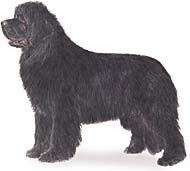INSTANT PROMOTION - LIMITED TIME OFFER - GET YOUR PUPPY COUPON TODAY
Hicksville: 516-938-7877
Lynbrook: 516-825-7877
Hicksville: 516-938-7877
Lynbrook: 516-825-7877
Currently we do not have any Newfoundland Puppies available.
Please complete the form below to be notified when they are back in our stores.

Height: 26 – 28 inches Weight: 110 -150 lbs.
Colors: Black, brown, gray, or Landseer (black head with black markings on a white ground). Coat: Flat, dense, and coarse textured double coat; oily and water resistant. Outer coat moderately long, straight or slightly wavy.
Temperament: Newfoundlands are responsive, docile With Children: Yes, good with small children, provides a wonderful companion for growing active children With Pets: Yes Special Skills: Originally a fisherman’s dog, now a family pet.
Watch-dog: High Guard-dog: Low
Care and Exercise: Daily brushing of the Newfoundlands thick double coat with a hard brush is required. Shedding of the undercoat is twice a year. Avoid bathing unless necessary as it will strip away their natural coat’s oils. Instead use dry shampoo. They need regular, moderate exercise even though they would love to laze around. The Newfoundland loves to swim and they should be given the opportunity whenever is possible. Training: A calm and balanced manner is needed as they are a very sensitive breed who will listen to the tone of your voice. Learning Rate: High, Obedience – High, Problem Solving – High
Activity: Outdoors – High, Indoors – Low Living Environment: Not suited for apartment living as they need lots of room. A large fenced yard is essential. They are more suited to colder than hot climates.
Health Issues: Hip dysplasia, genetic heart conditions.
Life Span: 10 years Litter Size: 8 – 10
Country of Origin: Canada History: One of the few native North American breeds they come from Newfoundland Island in Canada, where they were said to have first arrived with the British and French fisherman who reach these North Atlantic shores. Newfoundlands ancestors may have included the Great Pyrenees and Tibetan Mastiff. They were bred by the early settlers to pull sleds, hunt and guard. They adapted to the rugged conditions of Newfoundland by developing webbed feet and an oily coat which allows them to remain in the water for long periods of time. Today they are popular as a household pet throughout Europe and North America.
First Registered by the AKC: 1886 AKC Group: Working Class: Working Registries: AKC, ANKC, CKC, FCI (Group 2), KC (GB), UKC